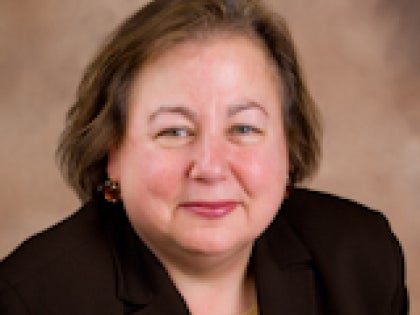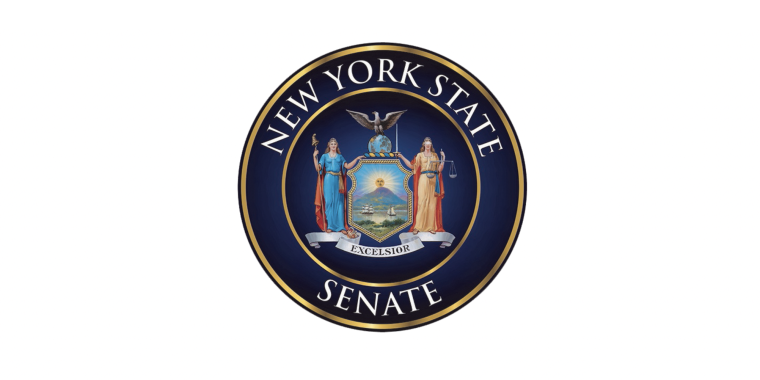
Testimony Before the New York City Traffic Congestion Mitigation Commission on October 25 , 2007
Liz Krueger
July 15, 2010
My name is Liz Krueger and I am the State Senator representing New York’s 26th Senate District, which covers the East Side of Manhattan and Midtown. I am here today to express a number of concerns regarding the Mayor’s proposal to charge automobiles traveling south of 86th Street in Manhattan. I urge the Traffic Mitigation Commission to fully consider and address these concerns when considering all options to decrease congestion in Manhattan’s Central Business Districts.
If implemented, congestion pricing will significantly impact transportation policy in the entire New York Metropolitan Region. Given the enormous potential impact on millions of people, one would expect this Commission to bend over backwards to solicit feedback, answer questions, and address the concerns of the public and the legislature. To date, this is not happening. My office learned of this hearing just 7 days ago, after a member of my staff asked the City Department of Transportation Commissioner for an update on congestion pricing at an unrelated meeting. The public deserves a chance to express their concerns on congestion pricing and to get answers to their questions. I urge the Traffic Mitigation Commission to schedule additional public hearings with more public notice, and to publish Question and Answer responses to key issues raised at these hearings on a publicly accessible website prior to completing their final report.
I recognize that the Traffic Mitigation Commission is charged with exploring different options for addressing traffic in Manhattan. However, since the only plan that was ever put in writing was Mayor Bloomberg’s congestion pricing proposal, the concerns and comments that I have received from constituents have mainly been in reaction to that proposal. Since April, I have received hundreds of phone calls, letters and emails from constituents holding varied positions on congestion pricing. Remarkably, the vast majority of these contacts were not interest group
form letters, but contacts from everyday citizens with strongly positive or negative views on pricing. From these conversations, a few key concerns have emerged that must be fully addressed and communicated before legislative consideration:
Why set the congestion zone border at 86th Street? If the City is seeking to reduce congestion in the Central Business Districts of Midtown and Lower Manhattan, why charge residents driving between 60th and 86th Street? On the other hand, if the goal is to improve overall air quality and public health in the city, why are the communities with the highest asthma rates in the city not included in the congestion pricing zone?
How will the Mayor's plan address issues of truck congestion and truck double parking? Charging a delivery truck $21 per day may or may not slightly decrease truck congestion, but why not explore decreased pricing for evening and early morning truck deliveries to the core business district to decrease congestion during the busiest times of day? Further, Sam Schwartz, a former deputy commissioner at the New York City Department of Transportation, estimates that trucks currently make approximately 10,000 through trips each day via the CBD (with no delivery or pick-up stops in Manhattan), with the current one-way toll policy on the Verrazano Bridge accounting for a significant portion of this traffic. Shouldn’t any serious congestion plan address alternatives paths for these vehicles, including either two way tolling or reduced tolls to shift these truck trips out of Manhattan?
How will congestion pricing impact neighborhoods bordering the pricing zone? Residents in neighborhoods bordering the proposed congestion zone fear an influx of commuters parking just outside the zone and taking the subway to work. What are the net traffic impacts of congestion pricing to these bordering neighborhoods? Will the Commission require the establishment of a residential parking permit system to discourage such behavior?
Why charge congestion zone residents $4 to travel within the zone and $8 to leave the zone? The City has determined that residents will drive at a discounted rate for trips within the zone. Why will they be charged the full $8 fee to commute to jobs outside the zone?
Why are automobile commuters who cross existing toll bridges exempted from most if not all of the congestion pricing fees? For example, driver’s currently pay $6 to drive through the Lincoln and Holland Tunnels and the George Washington Bridge. Under the Mayor’s proposed plan, they would only be charged $2 additional. And if the Tunnel/Bridge tolls increase by $2, then they would pay $0 for congestion pricing. How would the Mayor’s plan encourage changed driving patterns by all these commuters if there are no increased costs?
How will the City improve public transportation options to accommodate the expected modal shifts between automobiles and mass transit? Since we clearly do not want to discourage people from living in, working in or visiting our City, we can not simply increase the costs of driving and expect a major decrease in congestion UNLESS we INCREASE PUBLIC TRANSPORTATION OPTIONS. Commuters from outside the City MUST have reliable train and bus service and places to park their cars near their home community rail and bus stations. Residents of Queens, Brooklyn, the Bronx and Staten Island must have access to subway stations and buses that can move them in and out of Manhattan 24 hours each day. These changes require capital investments and regional commitments!
New York City Transit estimates that congestion pricing will generate $283.6 Million in new capital needs and $55.8 Million in operating needs above what has been promised New York under the Federal Transportation Department’s Urban Partnerships Agreement. The MTA’s current fiscal crisis and proposed fare increase are largely the result of financing past capital expenses with debt. Future congestion pricing proposals must explain how these capital and operating gaps will be funded.
Revenues from congestion pricing must be dedicated to an independent body with guidelines establishing strict protocol to determine which projects are funded. Because New York City Transit ridership accounts for 7 million of the MTA’s 14.6 million average weekday ridership, this body should empower the City to assume a larger role in the capital budgeting process than it has in the past. The initial congestion pricing legislation did this by creating the Sustainable Mobility and Regional Transportation Authority, but subsequent drafts diffused power among the Assembly Speaker, the Senate Majority Leader, the Mayor and the Governor. Furthermore, existing revenue streams for the transportation capital budget such as the Real Estate Investment Tax must not be re-routed as a result of any new congestion pricing revenues, as has been done in the past when New York established the state lottery to finance education.
Of course, the City and the MTA will need to follow through on a number of promised improvements to the existing transportation network before moving forward with congestion pricing. One project, the Second Avenue Subway, will undoubtedly benefit from the new revenue stream, but this project is not scheduled for completion before 2014, and a full length Second Avenue Subway will not come online before 2030. Until then, the East Side needs new transit options to meet existing demand and decrease crowding on the Lexington Avenue line. Having advocated for a system of Bus Rapid Transit (BRT) on First and Second Avenue for a number of years, I am pleased that the City has chosen the M15 on First and Second Avenue as one of its initial demonstration BRT routes. I urge the City to move forward with BRT’s implementation quickly and evaluate options to strengthen its existing BRT plan in future years.
The City has committed to spend millions to construct ferry terminals at East 90th, East 75th, East 62nd, and East 34th Streets, but these investments will mean little if commuters are expected to pay commercial rates. The Commission should consider requiring subsidized ferry service on the East Side and in other neighborhoods poorly served by existing transit options. Doing so has the potential to dramatically decrease commute times, reconnect New York to its valuable waterfront resources, and create opportunities for increased density and affordable housing in neighborhoods which otherwise possess few good commuting options to the Central Business Districts.
Despite these concerns, the City’s proposal is a serious attempt to address the critical issue of traffic congestion in New York City and fund its transportation capital needs. Congestion pricing could dramatically improve traffic conditions, air quality, public transportation, and residential quality of life. While I agree with many of congestion pricing's core principals, the devil is in the details, and congestion pricings proponents must do a better job of explaining their proposal, and justifying the specifics of that proposal.
Thank you for the opportunity to testify.
Share this Article or Press Release
Newsroom
Go to NewsroomSenator Krueger's November 2025 Update
November 25, 2025



2025 Midyear Report on Receipts and Disbursements
November 5, 2025
